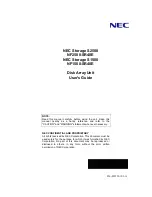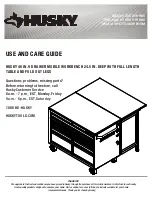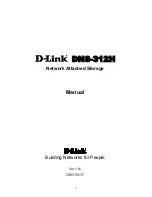
DL4300 Appliance
Exporting data to a Hyper-V virtual machine
271
NOTE:
Only generation 2 supports the secure boot option.
17. Specify the appropriate network adapter for the exported VM.
18. On the Volumes page, select the volume(s) to export; for example, C:\.
NOTE:
If the selected volumes are larger than the appropriate maximum allocations supported by the
application as indicated below, or exceed the amount of space available, you will receive an error.
•
For VHDX disk format, your selected volumes should be no larger than 64 TB.
•
For VHD disk format, your selected volumes should be no larger than 2040 GB.
19. On the Volumes page, click Finish to complete the wizard and to start the export.
NOTE:
You can monitor the status and progress of the export by viewing the Virtual Standby or
Events pages.
Parent topic
Performing a continual (Virtual Standby) Hyper-V export
Complete the steps in this procedure to perform a continual export to a Hyper-V virtual machine (VM) using Rapid
Recovery.
1. In the Rapid Recovery Core Console, do one of the following:
•
From the Core Console, in the button bar, click the Restore drop-down menu, and then select VM Export.
1. In the Virtual Machine Export Wizard, select Continuous (Virtual Standby).
2. Click Next.
•
From the Core Console, in the icon bar, click (Virtual Standby).
▪
On the Virtual Standby page, click Add to launch the Virtual Machine Export Wizard.
2. On the Machines page of the Virtual Machine Export Wizard, select the protected machine that you want to
export.
3. Click Next.
4. On the Recovery Points page, select the recovery point that you want to use for the export.
5. Click Next.
6. On the Destination page, in the Export to a Virtual Machine drop-down menu, select Hyper-V, and then do
one of the following:
•
To export to a local machine with the Hyper-V role assigned, click Use local machine.
•
To indicate that the Hyper-V server is located on a remote machine, click Remote host, and then enter the
parameters for the remote host as described in the following table.
Table 124. Remote host information
Text Box
Description
Host Name
Enter an IP address or host name for the Hyper-V
server. It represents the IP address or host name of
the remote Hyper-V server.
Port
Enter a port number for the machine. It represents
the port through which the Core communicates with
this machine.
User name
Enter the user name for the user with administrative
privileges for the workstation with the Hyper-V
















































